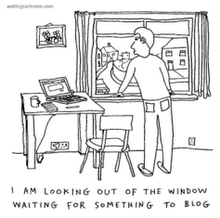human trafficking 101...
 beings, who are subjected to involuntary acts such as begging, sexual exploitation (prostitution, forced marriage, etc…), or unfree labor (involuntary servitude or working in sweatshops). Trafficking involves a process of using physical force, fraud, deception, or other forms of coercion or intimidation to obtain, recruit, harbor, and transport people.”
beings, who are subjected to involuntary acts such as begging, sexual exploitation (prostitution, forced marriage, etc…), or unfree labor (involuntary servitude or working in sweatshops). Trafficking involves a process of using physical force, fraud, deception, or other forms of coercion or intimidation to obtain, recruit, harbor, and transport people.”
Trafficked people most often come from the poorer regions of the world, where opportunities are limited and are often from the most vulnerable in society (such as runaways, refugees, or other displaced persons), especially in post-conflict situations (Kosovo, Bosnia, etc…). But they also come from ANY social background, class, or race.
Generally, people who are seeking entry into other countries might be picked up by traffickers and misled into thinking that, upon being smuggled across the border of that country, they will be free.
Women and children are the groups that are most commonly targeted by traffickers and, therefore, have the highest victimization rates.
- •Children sold after parents having been deceived
- •Women misled into thinking they are getting good jobs
- •Men are also trafficked for hard labor or to work in restaurants, as janitors, in sweatshop factories, or in migrant agricultural work.
Escape from these conditions is difficult and extremely dangerous.
The US State Department estimates that 600,000 to 800,000 men, women, and children are trafficked across international borders each year. Of those, 80% are women and girls, and 50% are minors.
But this isn’t just happening internationally. A surprising 50,000 people  are trafficked into or transited through the United States each year. After drug dealing, trafficking of humans is tied with arms (guns, etc…) dealing as the second largest criminal industry in the world, and it’s the fastest growing. Prior to October 2000 there was no comprehensive Federal law in place to protect victims of trafficking or to prosecute their traffickers.
are trafficked into or transited through the United States each year. After drug dealing, trafficking of humans is tied with arms (guns, etc…) dealing as the second largest criminal industry in the world, and it’s the fastest growing. Prior to October 2000 there was no comprehensive Federal law in place to protect victims of trafficking or to prosecute their traffickers.
 are trafficked into or transited through the United States each year. After drug dealing, trafficking of humans is tied with arms (guns, etc…) dealing as the second largest criminal industry in the world, and it’s the fastest growing. Prior to October 2000 there was no comprehensive Federal law in place to protect victims of trafficking or to prosecute their traffickers.
are trafficked into or transited through the United States each year. After drug dealing, trafficking of humans is tied with arms (guns, etc…) dealing as the second largest criminal industry in the world, and it’s the fastest growing. Prior to October 2000 there was no comprehensive Federal law in place to protect victims of trafficking or to prosecute their traffickers.What can YOU do?
- •Shop fair trade stores (10,000 Villages; World of Good; etc…)
- •Be aware of where all of your bought items are coming from. Old Navy and Wal-Mart have a history of using sweatshops.
- •Give “Loose Change to Loosen Chains.” Start a campaign in your area. It's a campaign originally designed for students and campuses but don't let that stop you. There is $10.5 billion in loose change in the United States alone every year. Let's give some of that to help free modern day slaves!
- •Go to International Justice Mission’s website by clicking on the link to find more ways you can help.
- PRAY!


No comments:
Post a Comment